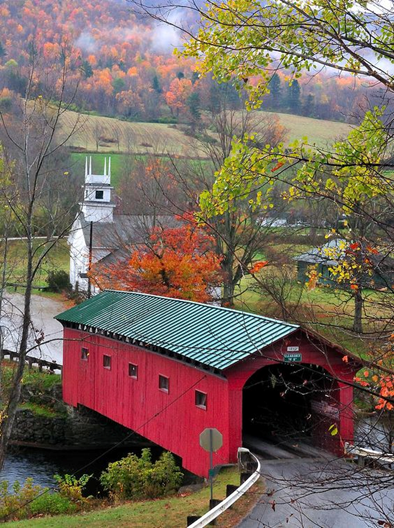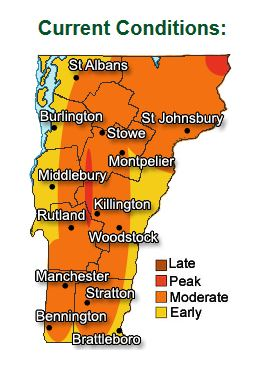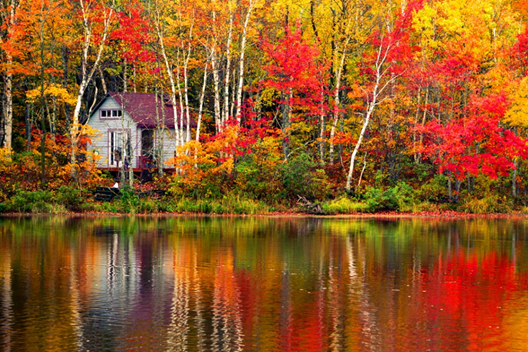Nearly 80% of Vermont is forested, with cities few and far between. The state’s interior is a rural playground for leaf peepers, and it’s widely considered to exhibit the most intense range of colors anywhere on the continent. Its tiny towns and hamlets—the few distractions from the dark reds, yellows, oranges, and russets—are as pristine as nature itself.
In Vermont we call it “leaf peeping” a phrase one-part awkward and one-part charming—as if the people doing the looking were catching nature in flagrante. Technically they aren’t wrong: “in flagrante” translates from Latin to “in blazing,” and what are these stately Vermont Mountains, undulating Vermont forests, in autumn if not ablaze with color? Periods of peak foliage, when the leaves are at their most riotous and vibrant, move from the north of the state to the south, and from its highest elevations to its lowest, as fall progresses. Gorgeous vistas lit up with gold, orange, yellow and red (and everything in between) are visible from mid-September through mid-October, but it’s a good rule of thumb to head farther north the earlier it is. Foliage color generally starts to change in the higher, cooler areas of the Green Mountains, spreading down into the Lake Champlain Valley and Connecticut River Valley, and moving from north to south across the state. The exact timing of the color change varies from year to year.

A car provides the maximum flexibility for traveling around Vermont, and Rufus is at your disposal for a great outing, but the best way to get the full-on fall experience is to put on your boots and hike! There are so many options to enjoy from one of Vermont’s picturesque lake, river, or mountainside villages, so whether you’re driving country roads or pulling on your hiking books, there’s something here for everyone.
This map is accurate as of today’s date – 9.27.2019 – Get out there and have some fun!

